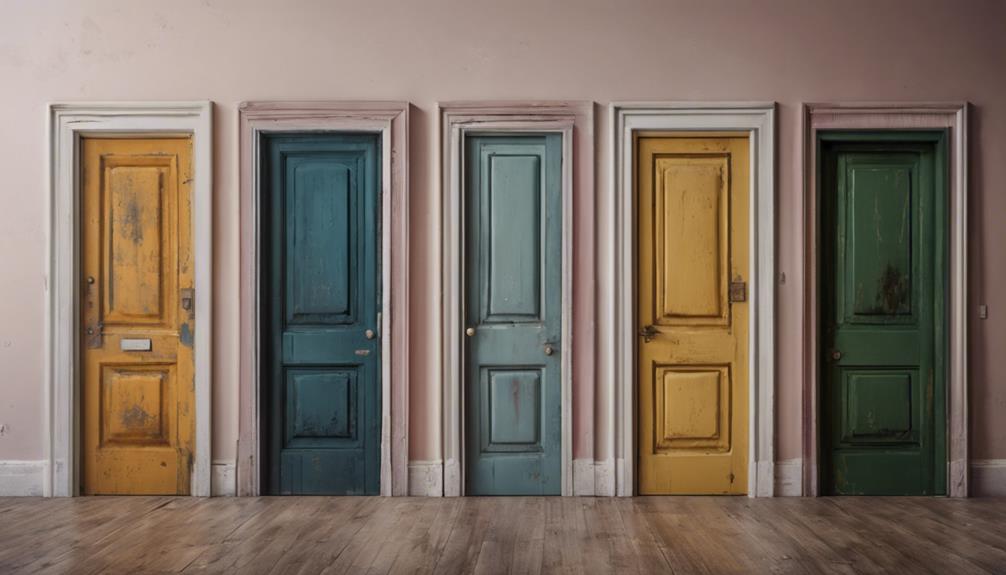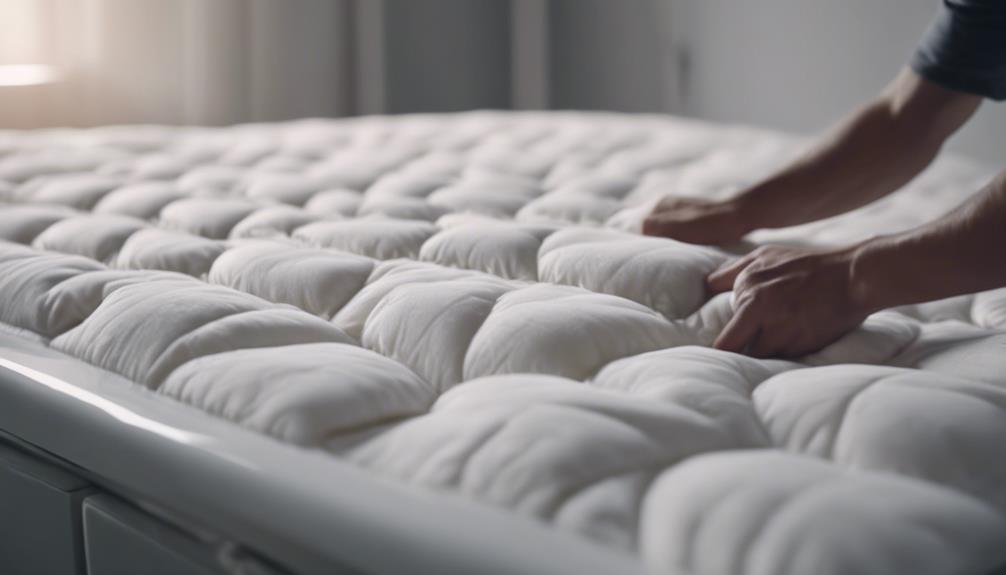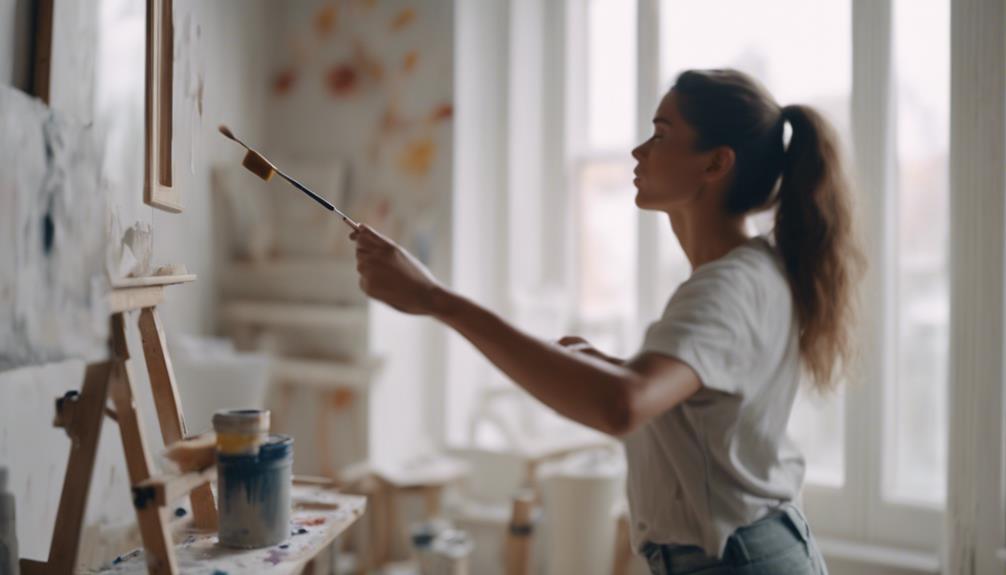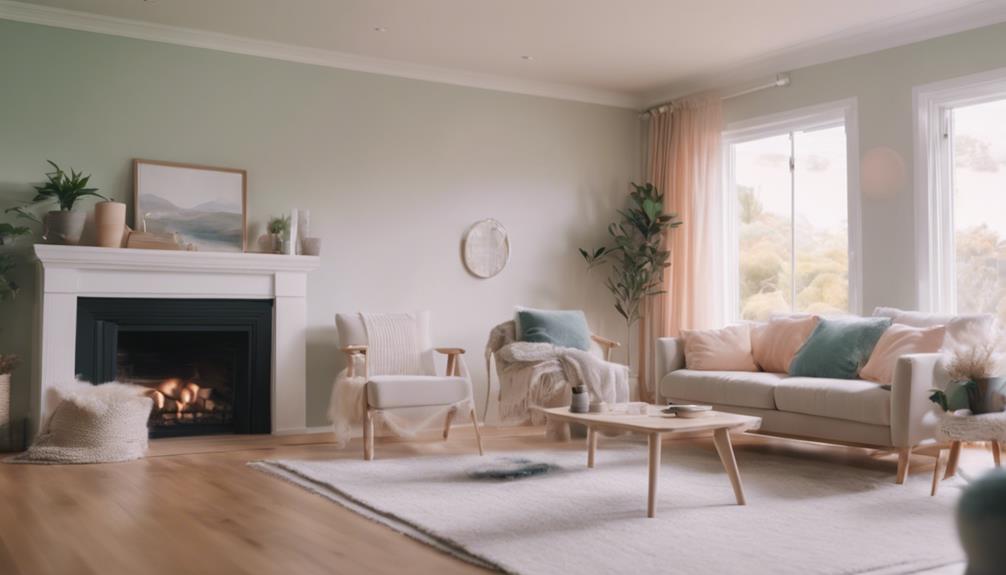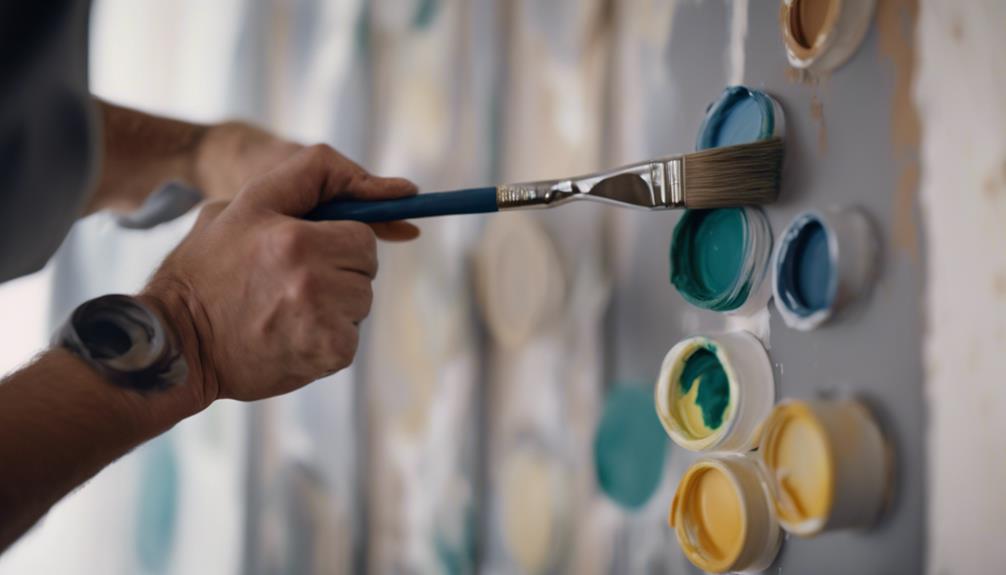To keep your interior doors looking fresh, consider repainting high-traffic areas every 5-7 years. Kids and pets can wear down paint faster, so watch for signs of damage. Bedrooms with changing tastes might need touching up every 2-5 years. Adult bedrooms or low-traffic areas can go longer between repaints, looking at 7-10 years for a refresher. Choose colors wisely, matching natural light and desired ambiance. Maintaining good condition can increase time between paint jobs. Easy maintenance tips can help you achieve a lasting, beautiful look for your interior doors.
Key Takeaways
- Consider repainting every 5-7 years for long-lasting results.
- Bedrooms with high activity levels may need repainting every 2-5 years.
- Low-traffic areas like adult bedrooms can be repainted every 7-10 years.
- Choose colors to match ambiance and repaint every 2-4 years to maintain appearance.
- Regular maintenance and quality paint can extend time between repaints.
Factors Affecting Repainting Frequency

Wondering what determines how often you should repaint your interior doors?
The frequency of repainting your interior doors relies on various factors such as wear and tear, usage patterns, and aesthetic preferences. High-traffic areas within your home may demand more frequent repainting compared to doors in less frequently used spaces.
Factors like having children or pets, along with daily activities, can greatly impact the need for repainting your interior doors. Additionally, if you frequently update your decor or have changing tastes, you might find yourself repainting your interior doors more often to match the new aesthetic.
To prolong the time between repainting, using high-quality paint and ensuring proper maintenance of your interior doors are important. By paying attention to these factors and taking good care of your doors, you can determine the ideal repainting schedule that suits your home and lifestyle.
High-Traffic Areas
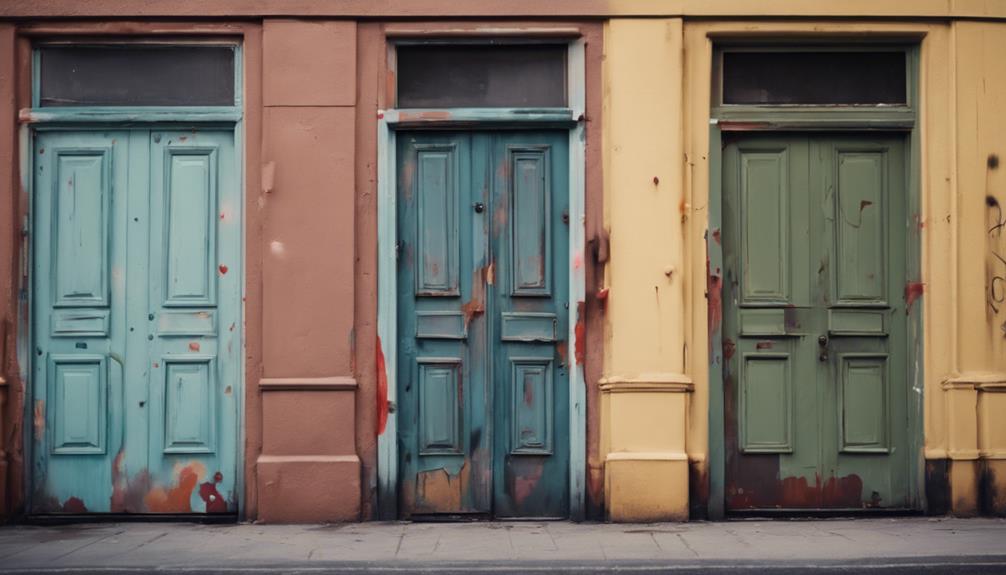
In high-traffic areas, like interior doors, durability of paint is essential. The more frequently a door is used, the quicker it may wear out.
Regular maintenance can help extend the time between repaints in these busy spots.
Durability of Paint
To maintain the durability of paint in high-traffic areas such as living rooms, consider repainting every 5-7 years due to factors like kids, pets, and daily activities impacting longevity.
- Kids running around and touching doors
- Pets scratching or rubbing against doors
- Daily activities causing wear and tear
- Quality paint jobs lasting up to 5 years
Regular repainting in high-traffic areas helps uphold a fresh and welcoming atmosphere in your home. Consider the frequency of usage and wear and tear to determine how often to repaint interior doors in these areas. Keeping up with maintenance guarantees your doors look their best and can withstand the daily hustle and bustle.
Maintenance Frequency
Consider repainting interior doors in high-traffic areas every 2-4 years to maintain a fresh and welcoming appearance. Quality paint jobs on these doors can typically withstand daily activities for up to 4 years. Factors like kids and pets can influence the frequency of repainting.
Regular maintenance of high-traffic areas prevents wear and tear issues, preserving the overall aesthetic appeal of your home. By staying on top of repainting, you guarantee that your interior doors look their best. A few coats of paint every few years can make a significant difference in upkeeping the quality of your doors.
Keep an eye on the condition of your doors and refresh the paint when needed to maintain a polished look.
Bedrooms and Changing Tastes
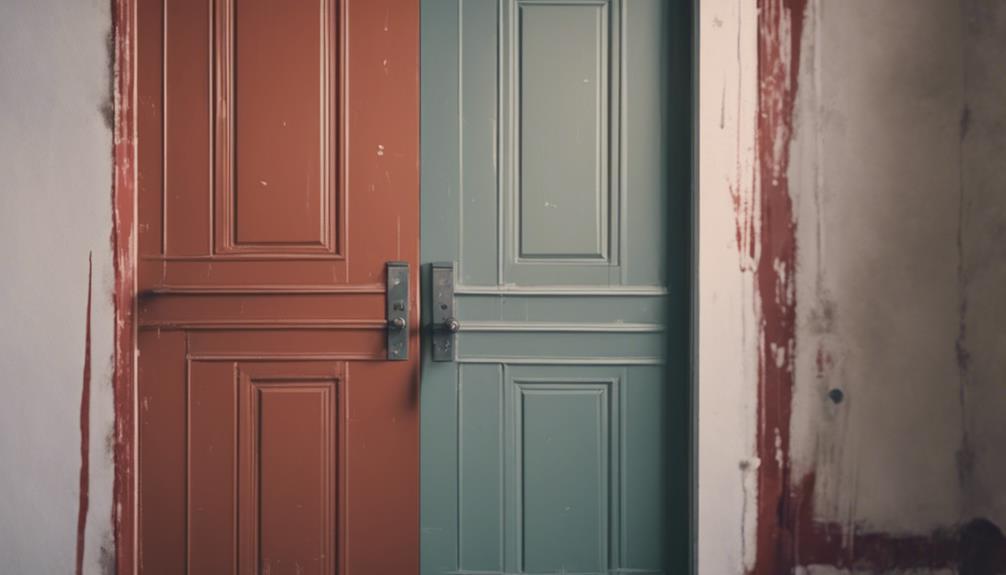
Children's evolving tastes and activities often drive the need for more frequent repainting of their bedrooms. It's essential to keep up with these changes to create a space that reflects their personalities and interests.
- Young children's bedrooms: Repainting every 2-3 years is recommended due to wear and tear from active play and exploration.
- Teen bedrooms: With evolving preferences and styles, teens may require repainting every 3-5 years to maintain a space that aligns with their growing identities.
- Changing decor: As children evolve into adulthood, repainting adult bedrooms may only be necessary with significant decor changes or every 7-10 years to keep the space feeling fresh.
- Minimal wear and tear: Bedrooms with less activity and minimal wear can go longer between repaints compared to high-traffic areas in the home.
Adult Bedrooms and Low-Traffic Areas
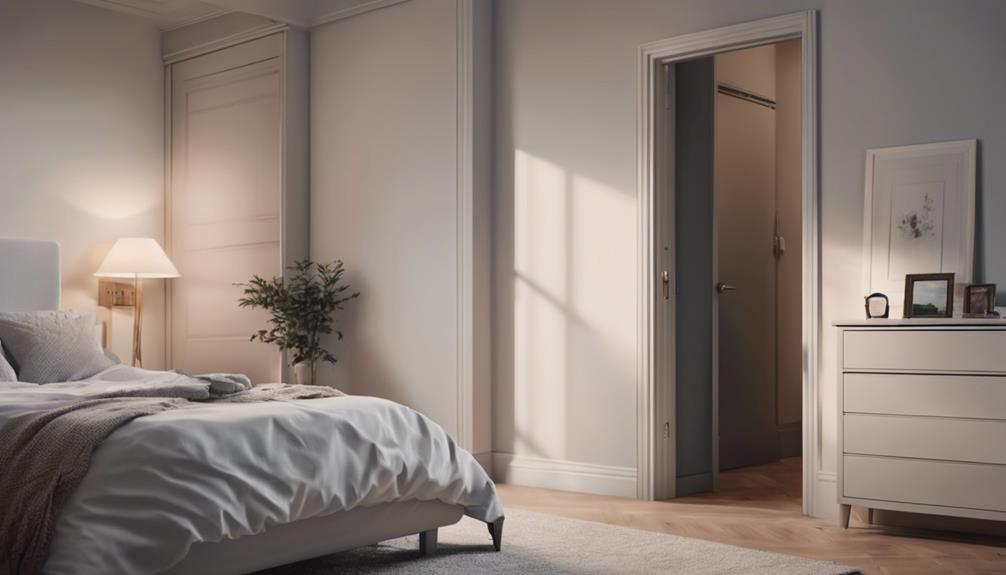
In adult bedrooms, where traffic is minimal, you can typically repaint every 7-10 years for a fresh look. These low-traffic areas experience less wear and tear on walls, allowing for longer intervals between repaints.
Consider repainting when decor changes or when walls begin to show signs of wear for best results.
Bedroom Door Maintenance
For adult bedrooms and low-traffic areas, maintaining the paint on bedroom doors typically involves repainting every 7-10 years. To make sure your bedroom doors stay looking fresh and appealing, consider the following maintenance tips:
- Regularly dust and clean the door surface to prevent dirt buildup.
- Take advantage of longer intervals between paint jobs due to minimal wear and tear.
- Use repainting opportunities to coincide with decor updates or style changes.
- With proper care, adult bedroom doors can uphold their appearance for an extended period.
Low-Traffic Area Care
Maintain the paint on interior doors in low-traffic areas, such as adult bedrooms, by reassessing every 7-10 years to guarantee a fresh and attractive appearance. When caring for low-traffic areas, like bedrooms with minimal activity, the frequency of repainting is more about decor changes than wear and tear. By using quality paint and proper maintenance, you can extend the lifespan of interior doors in these areas. Contemplate the following factors when determining the repainting frequency for low-traffic areas:
| Factors to Contemplate | Repainting Frequency | Benefits |
|---|---|---|
| Amount of Natural Light | Every 7-10 years | Enhances room aesthetics |
| Wall Color Compatibility | Varies | Maintains cohesive design |
| Quality of Paint Used | Every 8-9 years | Long-lasting finish |
Considerations for Repainting
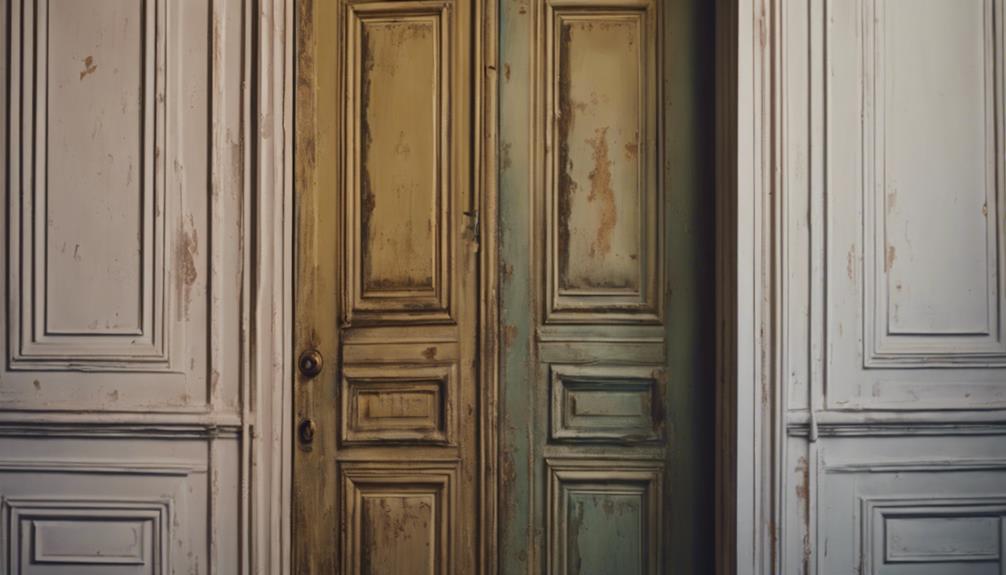
When deciding whether to repaint your interior doors, assess the condition and appearance to determine if it's time for a fresh coat of paint. To make the best decision, consider the following:
- Wear and Tear: Inspect your doors for signs of wear, scuffs, or damage that may detract from the overall look of the room.
- Frequency of Use: Doors in high traffic areas may require more frequent repainting to maintain a polished appearance.
- Aesthetic Enhancement: Repainting your doors can greatly enhance the overall aesthetic and appeal of the room, giving it a fresh and updated feel.
- Quality Paint: Opt for top-notch paint to guarantee durability and long-lasting results on your interior doors.
Lifestyle Factors
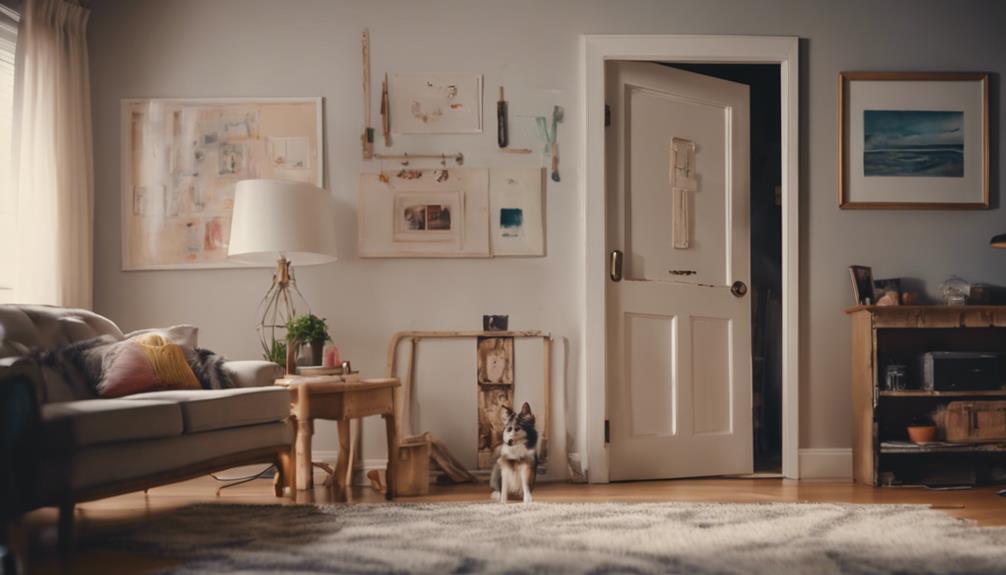
Assess how lifestyle factors, such as high traffic and the presence of children or pets, impact the frequency of repainting your interior doors.
In busy households, doors in areas like dining rooms or hallways that experience high traffic may require more frequent repainting to keep them looking fresh. Children, with their playful activities and tendency for creating scuffs, can also contribute to the need for regular door repainting.
Homes with multiple occupants constantly coming and going can lead to increased wear on interior doors, necessitating more frequent touch-ups. Lifestyle choices that involve frequent opening and closing of doors can accelerate the need for repainting as well.
Consider these factors when determining how often you should repaint your interior doors to maintain a well-maintained and appealing home environment.
Desired Aesthetics
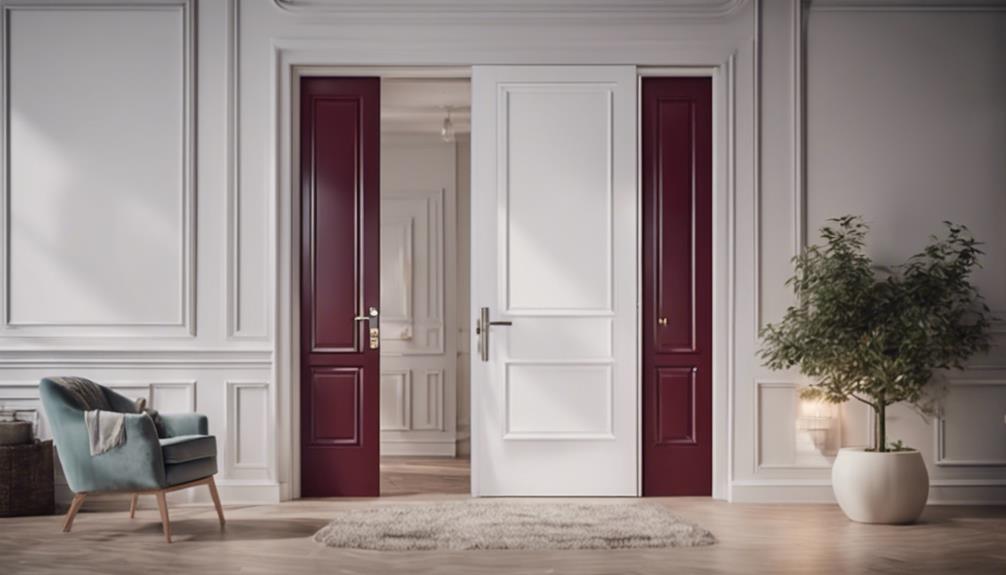
Enhancing the overall aesthetics of a room can be achieved by selecting the right paint color for interior doors. When considering the desired look for your space, the paint color of your doors plays an essential role.
Here are some tips to help you make the best choice:
- Coordinating door colors: Matching the door color with the room's decor creates a cohesive and stylish look.
- Bold and contrasting door colors: Opting for vibrant or contrasting door colors can make a design statement and add visual interest to the space.
- Neutral door colors: Choosing neutral shades like whites, beiges, or grays can provide a classic and timeless appeal that complements various decor styles.
- Consider natural light: Take into account the amount of natural light in the room when selecting door colors to achieve the desired ambiance and atmosphere.
Maintenance Frequency
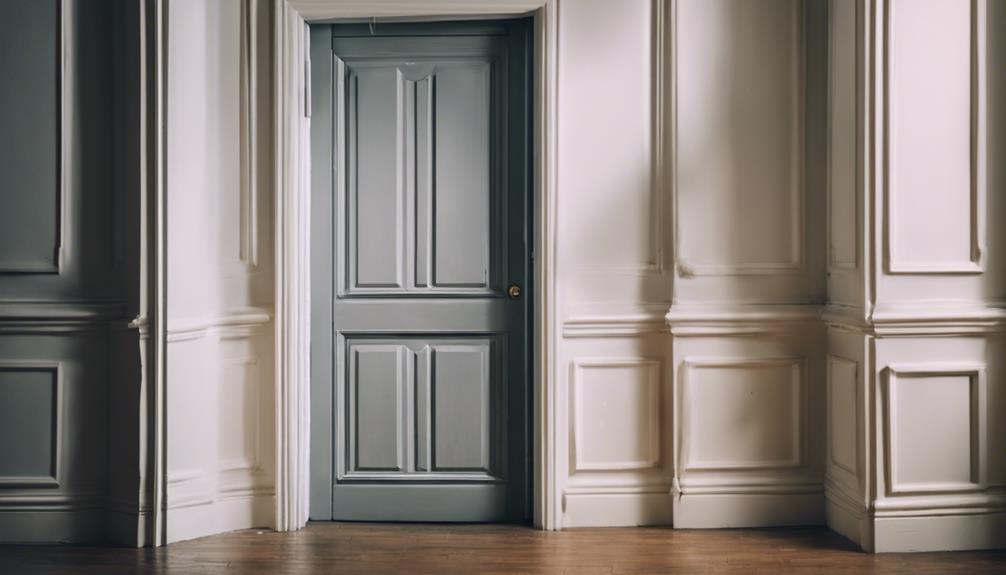
To maintain the desired aesthetics of your interior doors, it's important to take into account the recommended maintenance frequency for repainting them every 2-4 years. Painting interior doors at regular intervals helps prevent signs of wear and tear from daily use, such as scuffs, marks, and fading. By sticking to this maintenance schedule, you can guarantee that your interior doors maintain a fresh and appealing look throughout the years.
It's important to note that the frequency of repainting may vary depending on the level of traffic each door faces. For instance, high traffic areas like entryways may require more frequent repainting to keep them looking their best. Proper maintenance of interior doors not only preserves their appearance but also enhances the overall look and feel of the room they're in. By staying on top of repainting every 2-4 years, you can enjoy well-maintained interior doors that contribute to a polished and welcoming living space.
Longevity Between Paint Jobs
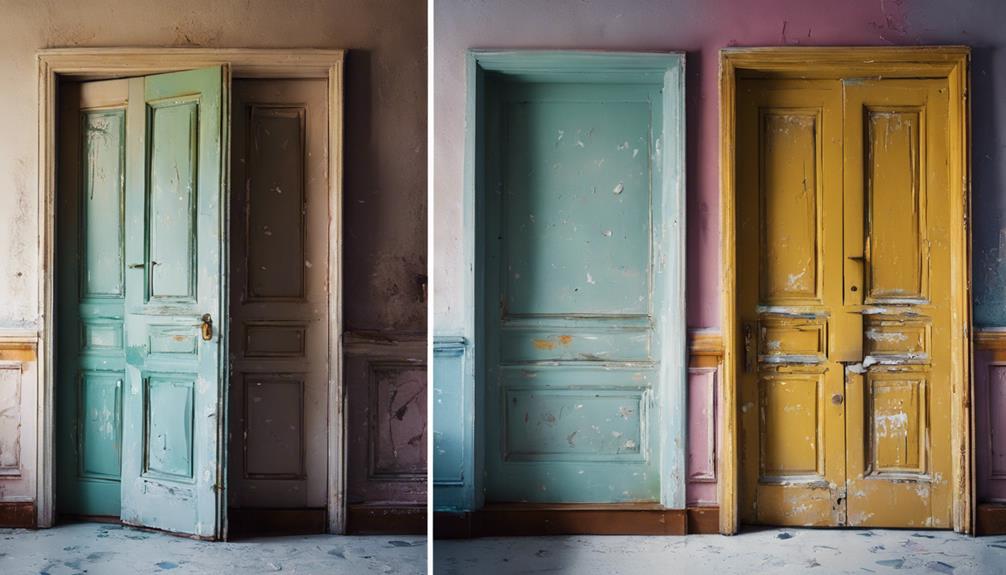
For interior doors, the longevity between paint jobs typically ranges from 5 to 7 years for maintaining a fresh appearance and upkeep. To extend the time between repaints, consider the following:
- Quality Paint: Opt for durable paint that can withstand wear and tear, especially in high traffic areas.
- Proper Application: Guarantee the paint is applied correctly with adequate coats for longevity.
- Prep Work: Thoroughly prepare the surface by cleaning and sanding before painting to enhance adhesion.
- Commercial Painting: For heavily used doors in commercial settings, more frequent repainting may be necessary to upkeep the appearance.
Importance of Door Condition
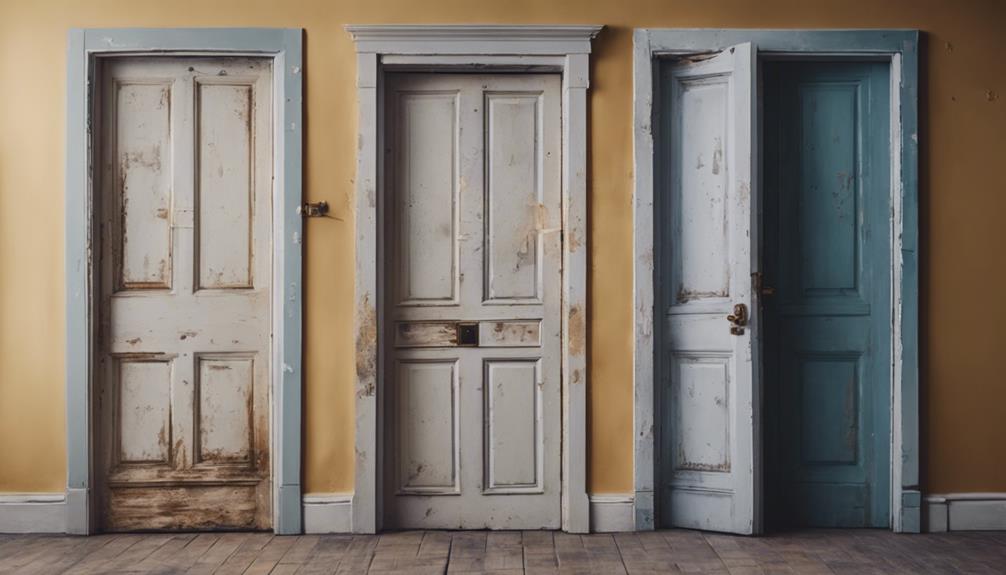
The condition of your interior doors greatly affects how often they need repainting. If your doors show visible wear, scratches, or damage, they may require more frequent painting to maintain a fresh look. On the other hand, well-maintained doors with minimal wear can go longer between paint jobs.
Regularly inspecting your interior doors' condition can help you determine when repainting is necessary. By keeping up with door maintenance and addressing any issues promptly, you can extend the time between repainting projects.
Remember that maintaining your doors in good condition not only enhances the overall appearance of your home but also helps in reducing the frequency of repainting, saving you time and effort in the long run. Paying attention to the condition of your interior doors is key to keeping them looking their best while also managing the repainting frequency effectively.
Frequently Asked Questions
How Often Should You Repaint Interior Doors?
You should repaint interior doors every 5-7 years for a fresh look. Factors like kids' rooms or high traffic areas might need more frequent repainting. Consider repainting when changing room decor.
Quality paint and maintenance can extend time between repaints.
Is It a Good Idea to Paint Interior Doors?
Painting interior doors is a great idea. It can revitalize your space, adding a personal touch and covering up wear and tear. Plus, it's a budget-friendly way to update your decor.
Do Interior Doors Need 2 Coats of Paint?
You should always aim for 2 coats of paint on interior doors for a smooth, long-lasting finish. This approach guarantees proper coverage and enhances the overall appearance of the doors.
Whether it's a fresh coat on an unpainted door or a refresher on a previously painted one, the two-coat method helps protect against wear and tear, giving your doors a fresh and durable look that will last over time.
How Often Should You Touch up Interior Paint?
When it comes to touching up interior paint, you should aim to do it every 1-3 years to keep your space looking fresh.
High traffic areas may need more frequent touch-ups to cover scuffs and marks. Regular touch-ups can save you time and money by preventing a full repaint.
Make sure to match the paint color and finish for a seamless look. Pay extra attention to spots like door frames and baseboards for targeted touch-ups.
Conclusion
To sum up, the frequency of repainting interior doors depends on various factors such as high-traffic areas, changing tastes, and desired aesthetics. Remember the adage, 'A stitch in time saves nine,' meaning that timely maintenance can prevent larger issues down the road.
Consider the condition of your doors, the level of wear and tear, and your personal preferences when deciding how often to repaint. Regular maintenance can keep your doors looking fresh and stylish for years to come.
